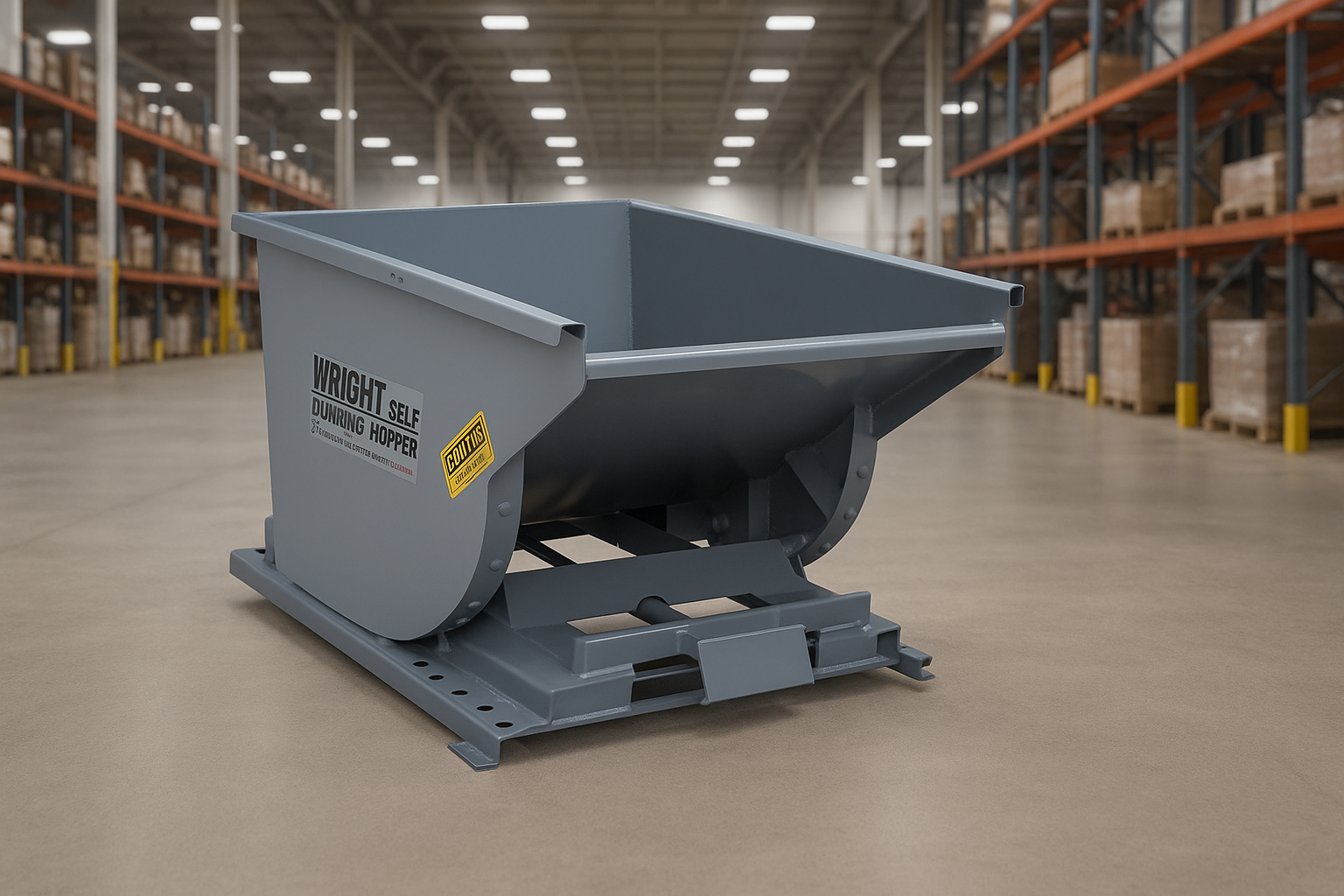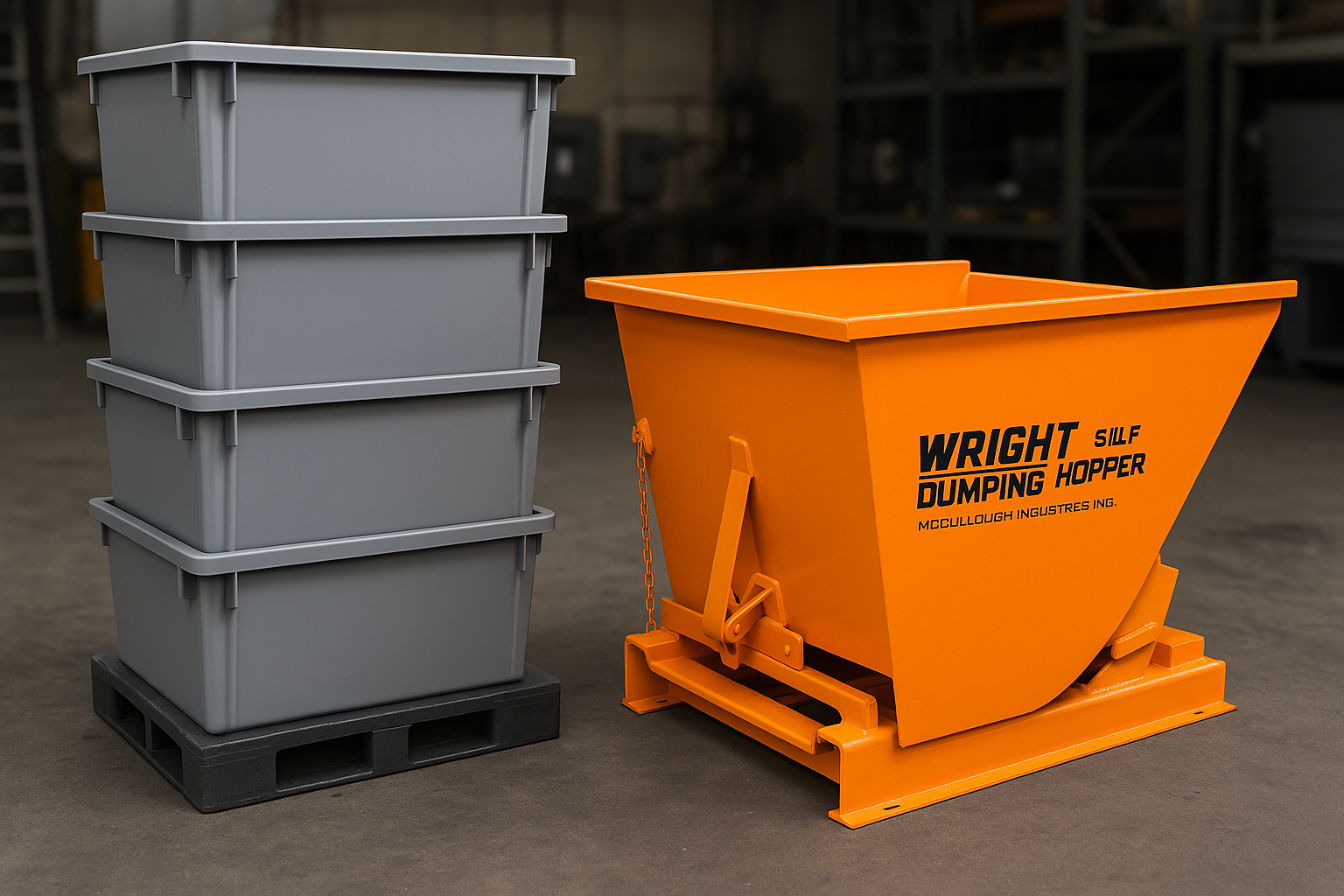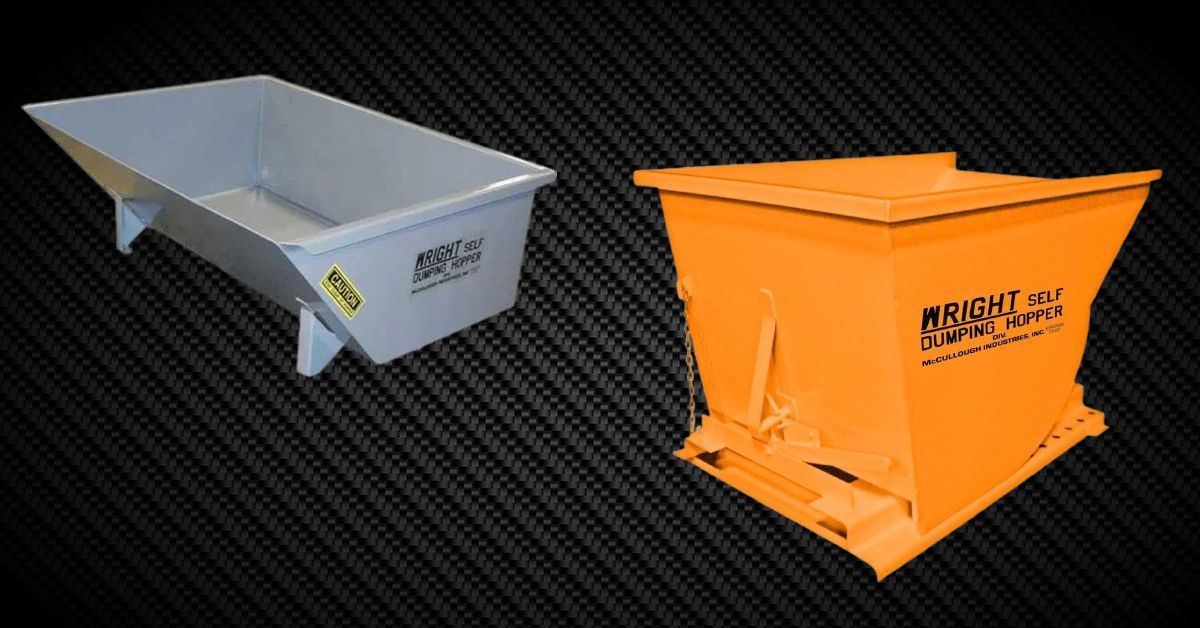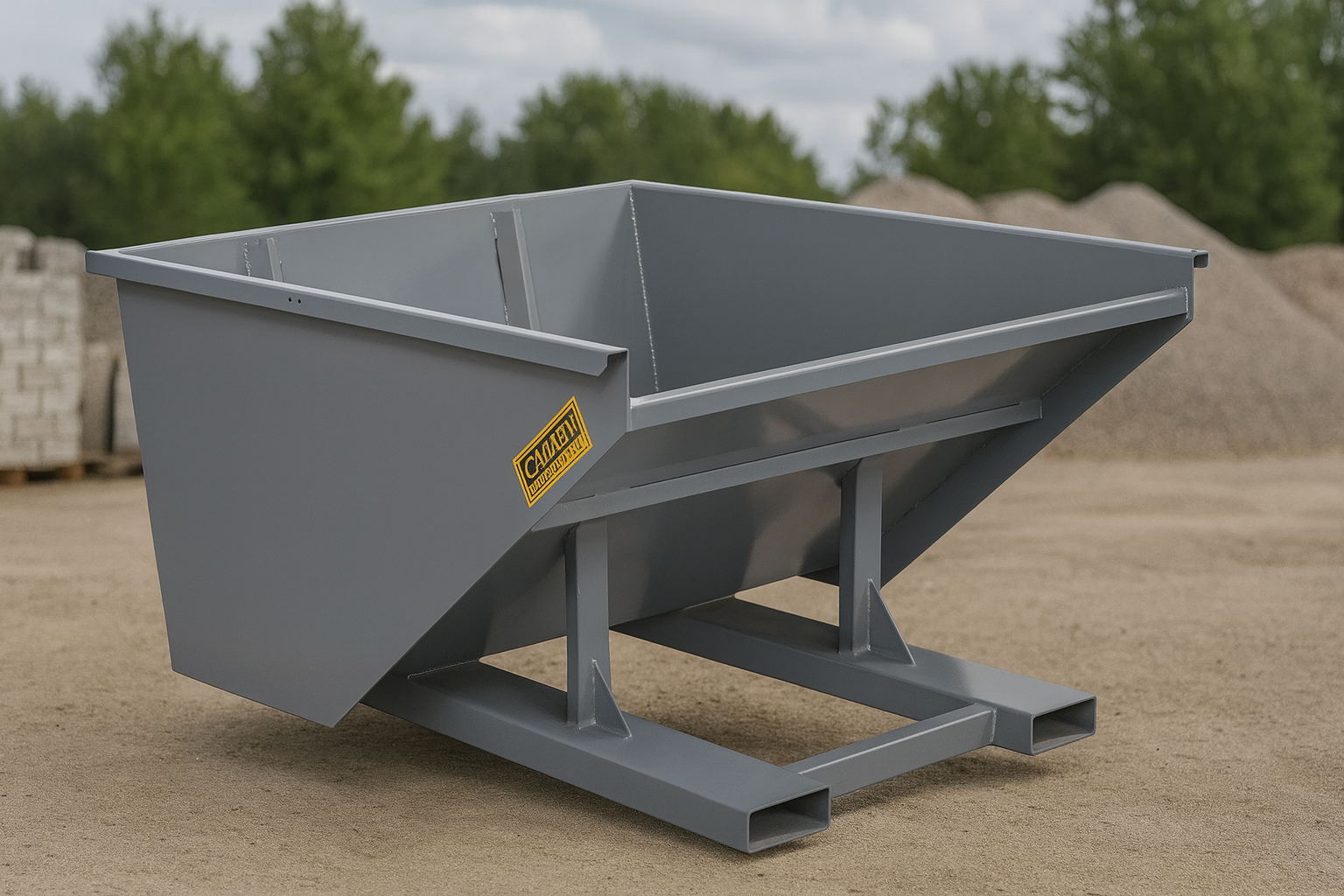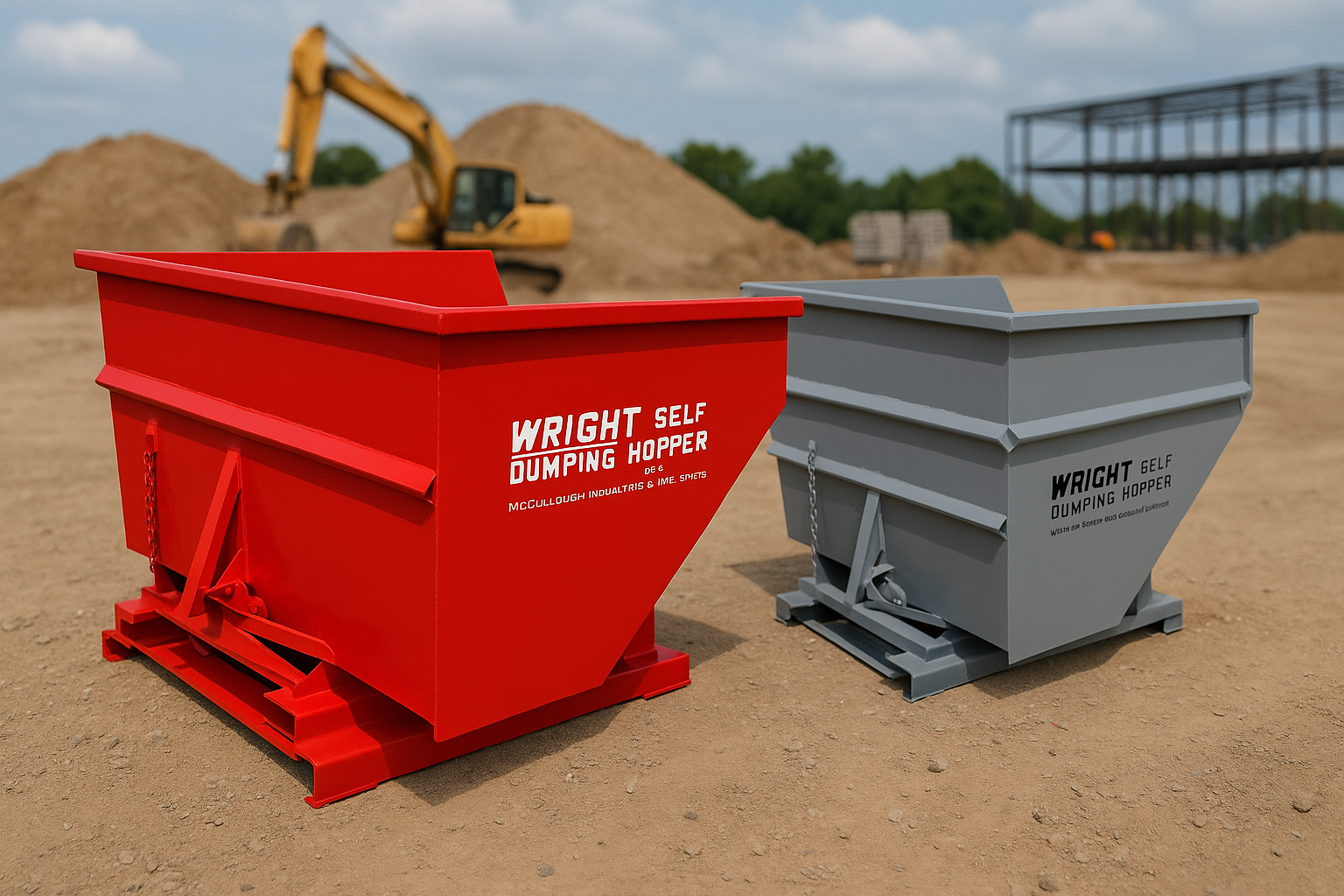
Understanding Wall Gauge in Hopper Design
When it comes to industrial self-dumping hoppers, wall gauge isn't just a number, it's the foundation of structural strength. At McCullough Industries, we build our Wright® Self-Dumping Hoppers to meet the exacting demands of heavy scrap environments, which means choosing the right steel thickness (gauge) is critical to long-term performance and safety.
This guide breaks down how wall gauge affects durability, weight handling, dump frequency, and workplace efficiency, helping you choose the right hopper for your material load and operation type.
What Does "Wall Gauge" Mean in Hopper Manufacturing?
What Does "Wall Gauge" Mean in Hopper Manufacturing?Wall gauge refers to the thickness of the steel used in hopper construction. Lower numbers mean thicker steel, for example, 7-gauge steel is thicker and stronger than 10-gauge.
At MCI, our Wright® hoppers are typically built using:
- 7-gauge steel for heavy-duty, high-impact applications
- 10-gauge steel for lighter-duty, lower-volume uses
Thicker walls add rigidity, resist denting, and handle more abrasive or sharp scrap materials without failure. Choosing the right wall gauge is essential to minimize cracking, warping, and unsafe tipping over time.
Common Industrial Hopper Gauges & Their Applications
| Gauge | Thickness (inches) | Best For |
|---|---|---|
| 10-gauge | 0.1345" | Light debris, paper, plastics, light recyclables |
| 7-gauge | 0.1793" | Metal scrap, hot chips, abrasive or heavy waste |
| Custom (1/4") | 0.25" | Extreme-duty jobs, demolition debris, oversized scrap |
When You Should Choose 7-Gauge or Thicker
7-gauge steel is the gold standard for Wright® heavy-duty hoppers like our GEN II Self-Dumping Hoppers. It's built to withstand:
- Constant loading and dumping cycles
- Sharp and dense metal scrap
- Heavy CNC waste with oils or hot shavings
- Repeated forklift impacts or rough handling
These hoppers resist bending, last longer, and reduce replacement costs over time. If your previous hopper showed stress fractures, seam splits, or fork tube failure, it's likely because the wall gauge was too thin.
Why Wall Gauge Impacts Safety
Using a hopper with walls too thin for the load can lead to structural failure during dumping. At MCI, every Wright® hopper is designed with:
- Reinforced fork pockets for added lifting strength
- Positive stop dump angles for predictable tipping
- Auto-reset mechanisms for safer handling
- Leak-resistant welds to contain fluid-heavy debris
Heavier wall gauge supports all of these features, helping your team operate more confidently and safely.
How Gauge Affects Hopper Weight Capacity
Wright® hoppers with 7-gauge construction typically handle up to 7,000 lbs, while 10-gauge hoppers are rated closer to 2,000–4,000 lbs depending on size. Here’s a breakdown of sample capacities:
| Model | Gauge | Capacity (cu yd) | Weight Rating |
|---|---|---|---|
| GEN II 10099 | 7-gauge | 1.0 | 7,000 lbs |
| GEN II 15099 | 7-gauge | 1.5 | 7,000 lbs |
| Low Profile 5055 | 10-gauge | 0.5 | 4,000 lbs |
Choosing the right wall gauge ensures that the unit maintains its rated capacity safely over time.
Applications That Demand Thicker Steel Walls
The more abrasive, hot, or heavy the material, the more critical wall gauge becomes. MCI customers often choose 7-gauge or thicker walls for:
- Metalworking shops with high-volume scrap
- Automotive recycling and salvage yards
- Construction debris collection
- Foundries and machining centers
- Defense and aerospace part handling
If your operation produces sharp shavings, oily chips, or offcut slabs, you’re operating in a high-risk environment for lighter-gauge bins.
Gauge Considerations by Hopper Type
Each Wright® Self-Dumping Hopper line offers gauge flexibility:
- GEN II Hoppers: Always 7-gauge for heavy-duty applications
- Low Profile Hoppers: Typically 10-gauge but can be customized
- Bump Release Hoppers: Often reinforced for roll-off compatibility
- Chip Hoppers: Built in 7-gauge with leak-sealed welds
- Quick Attach Hoppers: Rugged frames to match loader cycle stress
We don’t overbuild light-duty bins or underbuild heavy-duty tools. We engineer for your workload.
Customization for Your Scrap Profile
Not all industrial loads are the same. Our engineers will recommend wall gauge based on:
- Dump frequency per shift
- Type of debris (abrasive, wet, hot, bulky)
- Storage or exposure environment
- Mobility or forklift style
Need dual-wall hoppers? Ask us about double-reinforced interiors or base skids.
Signs You May Be Using the Wrong Gauge
Signs You May Be Using the WrongIf you're unsure whether your current hopper is up to the task, watch for:
- Bent or dented walls from normal use
- Fork pocket splitting or seam cracks
- Leaking welds from flex fatigue
- Warping during dump cycles
- Rust from surface wear or coating loss
These are all signs it’s time to upgrade to a better-engineered unit with appropriate wall gauge. Gauge
FAQs: Wall Gauge in Hopper Design
Is thicker always better?
Not necessarily. Thicker steel increases durability but also adds weight and cost. We recommend matching gauge to application.
Can I upgrade my current hopper to a thicker wall?
No. It’s more effective (and safer) to order a new unit designed from the ground up with the proper gauge.
Is wall gauge different for indoor vs outdoor use?
Gauge depends more on load type than location, but outdoor units may need both thicker walls and better finishes like galvanization.
What’s the strongest hopper MCI makes?
Our extreme-duty GEN II Self-Dumping Hoppers in 7-gauge or 1/4" steel can be built for extreme scrap and up to 7,000 lb capacities.
Can gauge affect forklift safety?
Yes. Underspec’d hoppers may fail under load, risking tip-over. We reinforce fork pockets and use heavier steel to prevent this.
Choosing Gauge Starts with Understanding Your Scrap
At McCullough Industries, we don’t build one-size-fits-all hoppers. We build Wright® Self-Dumping Hoppers designed for real scrap conditions whether you're moving hot chips, rough castings, or liquid-soaked debris.
Talk to our team to get the right gauge, frame, and finish for your operation. It’s more than just metal thickness, it’s the backbone of safe, productive material handling.

